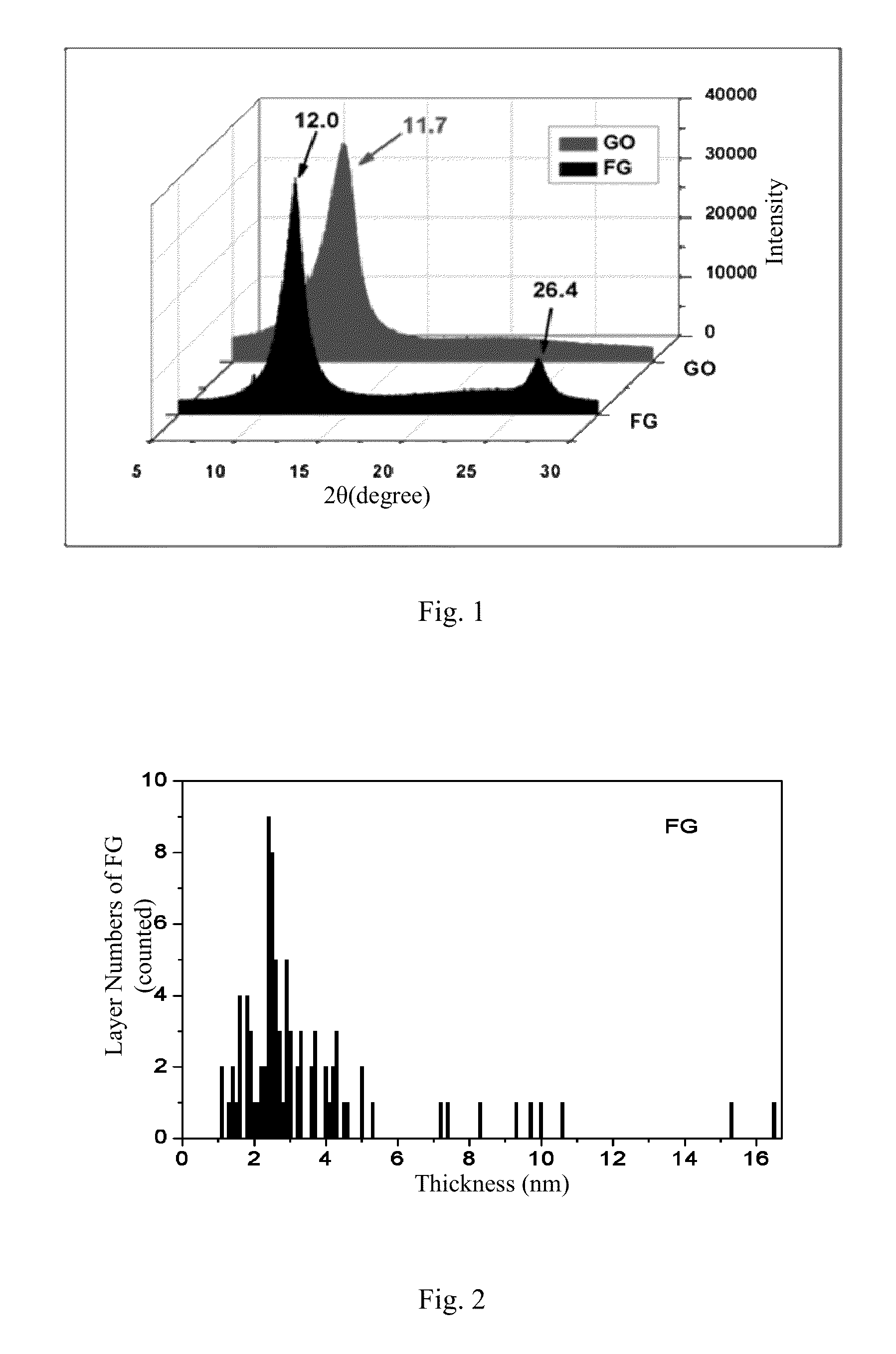Few-layered graphene materials and films thereof preparing
a graphene material and thin film technology, applied in the field of carbon materials, can solve problems such as poor large-scale preparation process
- Summary
- Abstract
- Description
- Claims
- Application Information
AI Technical Summary
Benefits of technology
Problems solved by technology
Method used
Image
Examples
example 1
[0044]To a 1 L round bottom three-necked flask were added 5.0 g of graphene and 3.75 g of NaNO3. 190 ml of concentrated sulfuric acid was then slowly poured into the flask with stirring. After mixing homogeneously, 11.25 g of KMnO4 solid was slowly added into the solution. The reaction mixture was kept in an ice bath for 3 hours to cool to the room temperature. After stirring for 6 days, to the reaction mixture was slowly added 500 mL of distilled water. The reaction solution was reacted for 3 hours at a constant temperature of 95° to 98° C. After the reaction solution was cooled, 15 mL of hydrogen peroxide (30 wt % aqueous solution) was added. The reaction solution was stirred at the room temperature. The impurities were removed from the reaction solution with centrifuge to obtain the product of the solution comprising few-layered graphene. Water and solvent were removed to obtain the product of the few-layered graphene.
[0045]FIG. 1 shows the X-ray diffraction (XRD) data of the res...
example 2
[0047]To a 1 L round bottom three-necked flask were added 10.0 g of graphene and 8 g of NaNO3. 400 ml of concentrated sulfuric acid was then slowly poured into the flask with stirring. After mixing homogeneously, 25 g of KMnO4 solid was slowly added into the solution. The reaction mixture was kept in an ice bath for 3 hours to cool to the room temperature. After stirring for 8 days, to the reaction mixture was slowly added 1,000 mL of distilled water. The reaction solution was reacted for 5 hours at a constant temperature of 95° to 98° C. After the reaction solution was cooled, 30 mL of hydrogen peroxide (30 wt % aqueous solution) was added. The reaction solution was stirred at the room temperature. The impurities were removed from the reaction solution with centrifuge to obtain the product of the solution comprising few-layered graphene. Water and solvent were then removed to obtain the product of the few-layered graphene.
example 3
[0048]0.1 mg of the few-layered graphene obtained in Example 1 or 2 was ultrasonically mixed with 1 mL of DMF to obtain a solution of few-layered graphene in DMF.
PUM
 Login to View More
Login to View More Abstract
Description
Claims
Application Information
 Login to View More
Login to View More - R&D
- Intellectual Property
- Life Sciences
- Materials
- Tech Scout
- Unparalleled Data Quality
- Higher Quality Content
- 60% Fewer Hallucinations
Browse by: Latest US Patents, China's latest patents, Technical Efficacy Thesaurus, Application Domain, Technology Topic, Popular Technical Reports.
© 2025 PatSnap. All rights reserved.Legal|Privacy policy|Modern Slavery Act Transparency Statement|Sitemap|About US| Contact US: help@patsnap.com


